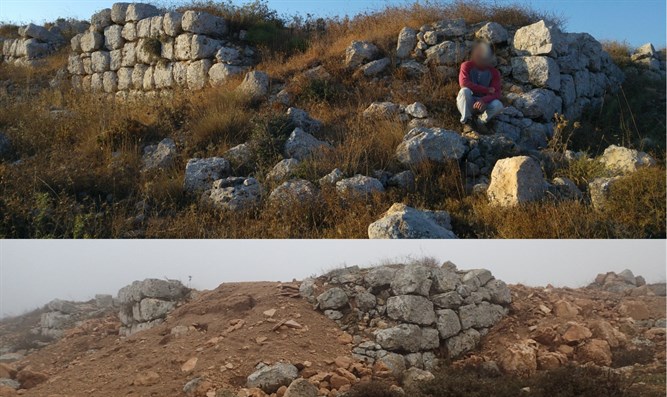
Hasmonean fortress that overlooked ancient Samaria road has become a favorite target for Arab antiquity thieves.
Yoni Kempinski, 25/08/19 22:05
The Burj el-Isana fortress, located on the border between Binyamin and Samaria, has become a favorite destination for Arab antiquity thieves.
The fortress, located on Mount Hatzor, preserves the name of the “old” biblical city featured in the civil war between the kingdoms of Judah and Israel in the ninth century BC (Chronicles). The city became a Hasmonean fortress, and later a Roman and Crusader city.
The city, a symbol of the beginning and end of the Hasmonean kingdom, was strategically located on the border between Binyamin and Samaria. It’s believed that the city and the fortress were built as a “monument” to Judah the Maccabi’s first victory in the battle against Apollonius in Wadi Hermia. In the same place, around 130 years later, Herod was victorious over the army of Matityahu Antigonus, the last Hasmonean king – a battle that ended the Hasmonean kingdom.
Eitan Mellet, the activities coordinator of the organization “Guarding Eternity” said: “The fortress is no longer guarding the roads but is rather silent testimony to weakness and contempt, to antiquity thieves who made it a favorite destination to search for coins and ancient jewelry with metal detectors.”
The organization is calling on hikers who encounter suspected robbery and destruction of antiques to report it on the Facebook page of “Guarding Eternity” in order that a complaint can be made to police and law enforcement agencies.
Source: Israel National News